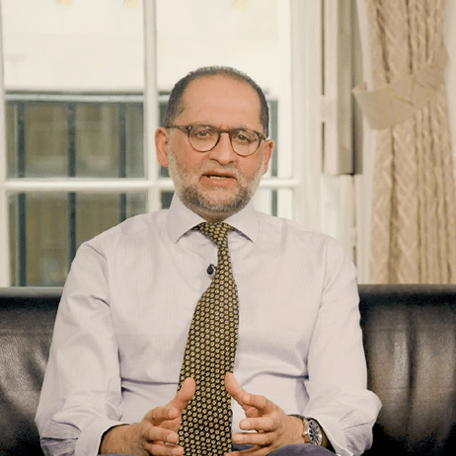The US has imposed far-reaching export controls to restrict Chinese companies from obtaining or manufacturing advanced semiconductors and to hamper their progress in artificial intelligence (AI). These are a substantial step in escalating the trade war with China.
China is a major importer of semiconductors, accounting for around a quarter of global semiconductor imports. This move will make it much more difficult for the country to become self-sufficient in silicon chips and continue its growth as a tech-based economy in the long term. It will also slow the advance of China’s defence capability versus the West, creating a two-speed segmentation between the West (and Taiwan) and China. At the margin, the near-term chances of Taiwan being invaded are rising, albeit incrementally.
The controls demonstrate that the US is back to playing a strategic, long-term game against China, and not just implementing short-term populist protectionist measures that were more typical of Trump’s presidency.
TSMC is the clear leader in fabricating chips
The primary impact of these measures will be on the semiconductor industry. Globally, it will shrink the revenue pool for chip manufacturing and so the level of research expenditure and pace of innovation in this area will likely slow.
Fabricating the leading-edge silicon wafers required for microchips with a high degree of accuracy and low error rate (within a few nanometres in scale) is one of the world’s most difficult tasks. It requires a long chain of specialist equipment pieces made by very few companies that are almost impossible to replicate. For example, the light source in an EUV machine from ASML generates light of a specific wavelength by firing two pulses of laser at each fast-moving drop of liquid tin. This is repeated up to 50,000 times per second. The engineering is complex and refined.
The world leader in manufacturing high-end microchips is Taiwan-based TSMC, which makes the most advanced chips and has the lowest error rates. The handful of companies that supply the semiconductor manufacturing tools to TSMC are mostly US and Europe-based. TSMC is the clear leader in integrating and fine-tuning these tools to etch the smallest circuits on silicon. South Korea’s Samsung is a fast follower and California’s Intel lies in third.
We have long-standing positions in TSMC and Samsung Electronics and believe that TSMC is the strategically most important company in the world with a $425 billion market capitalisation and a very reasonable low-teen multiple of price to earnings. If the industry’s revenue from China is lost or retained within China and focused on less advanced chips, then global semiconductor manufacturing companies will have a smaller revenue base to invest in R&D and so innovation within the industry will likely slow. This will be beneficial for those companies such as Samsung that are lagging TSMC.
China has embraced technology to advance its economy, leapfrog old technologies and is probably the world’s second hub for developing AI. It is a major buyer of high-end semiconductors, whose supply is likely to be stifled by the US sanctions. This will be a negative for investors and AI development, which uses concatenations of high-powered processors. It should be noted, however, that lower throughput microchips which are used, for example, in mobile phones will be permitted under the sanctions.
On the memory side of the semiconductor industry, China’s YMTC had been expected to emerge and challenge the increasingly consolidated memory chip market that is currently shared between Samsung, Micron and SK Hynix. It was probable that YMTC was nearing approval as a supplier to Apple but that is now highly unlikely. This is positive for pricing for the three memory companies, which have recently announced plans to cut capacity expansion, demonstrating industry discipline. We invest in Samsung Electronics, which will see its competitive advantage enhanced.
This further step in sanctions is also a positive for Nvidia, which had seen its own high-end microchips banned from China a month prior to the new controls. This had raised the incentive for China to establish a local champion competitor to Nvidia but this second slew of sanctions will make it very difficult to do that over a 15 to 20-year timeframe. Nvidia has been proactive in adapting its line-up of chips to design variants that are permitted by the announced bans.
An industry we can see growing because of the sanctions is cybersecurity. If China is blocked from legally accessing microchips and technology, then it will likely seek other ways to secure intellectual property. Cyber security will be a priority.
China’s renewable energy sector could be next
One area where our team has had much debate and that we expect should be relatively unaffected by these moves is R&D in biotech. Covid demonstrated the importance of local manufacturing and the abilities of governments to control drugs and vaccines made domestically. We believe this is a strong argument for the US to re-shore production. Conversely, the US pharmaceutical industry wants to keep its R&D costs down by outsourcing these internationally. Chinese R&D is therefore unlikely to be impacted because of the typical two-thirds cost savings. A shift to reshoring of manufacturing capacity could create some challenges for Chinese biotech company Wuxi, which has identified this risk and is already developing more manufacturing capability outside of China.
On a broader scale, the moves by the US are likely to discourage construction of new industrial facilities in China, incentivising both more reshoring of such facilities and greater use of automation. The latter should be advantageous to two of our Japanese automation specialist holdings: Fanuc and Keyence.
The moves by the US government have hobbled many US citizens’ (and green card holders’) ability to work in China in the semiconductor industry. Historically, many returning migrants created start-ups and grew businesses in China. The incentives to do so (and having to choose between seeing your family in the US and keeping your business in China) are now much weaker, which may limit some facets of innovation in China in the future.
Looking ahead, we believe the next Chinese industrial sector that could be hit by the US is renewable energy. China is a world leader in clean energy technology, including the manufacture of wind turbines, solar panels and batteries. If Chinese leaders in the battery sector, such as CATL and BYD, are barred in the West then this will benefit their competitors, including Samsung SDI, a holding in our Global Equity and International Funds.
Investors will need flexible mindsets
Ultimately, the new export controls create a schism between China and the rest of the world in gaining access to semiconductors, shifting market opportunities away from China and towards the West.
The US is clearly willing to use its resources to assert its values internationally, as already seen with other sanctions and power plays around the US dollar. The inclusion of AI in the latest sanctions also highlights its importance to future national security and economic development.
These sanctions signify the importance of investors maintaining a flexible mindset and being ready for the sheer scale of the political steps that governments are willing to take. Many forward-thinking companies that we own, such as Wuxi Biologics, have already been taking steps to minimise the political risks, while US-based chip designer, Marvell, realised some time ago that it was too hazardous to develop chips for Chinese customers and so it designs infrastructure semiconductor chips for companies outside China.
KEY RISKS
Past performance is not a guide to future performance. The value of an investment and the income generated from it can fall as well as rise and is not guaranteed. You may get back less than you originally invested.
The issue of units/shares in Liontrust Funds may be subject to an initial charge, which will have an impact on the realisable value of the investment, particularly in the short term. Investments should always be considered as long term.
Investment in funds managed by the Global Fundamental Team may involve investment in smaller companies. These stocks may be less liquid and the price swings greater than those in, for example, larger companies.
Some of the funds may hold a concentrated portfolio of stocks, meaning that if the price of one of these stocks should move significantly, this may have a notable effect on the value of that portfolio.
Investment in the funds may involve foreign currencies and may be subject to fluctuations in value due to movements in exchange rates. Some of the funds may invest in emerging markets/soft currencies and in financial derivative instruments, both of which may have the effect of increasing volatility.
DISCLAIMER
This is a marketing communication. Before making an investment, you should read the relevant Prospectus and the Key Investor Information Document (KIID), which provide full product details including investment charges and risks. These documents can be obtained, free of charge, from www.liontrust.co.uk or direct from Liontrust. Always research your own investments. If you are not a professional investor please consult a regulated financial adviser regarding the suitability of such an investment for you and your personal circumstances.
This should not be construed as advice for investment in any product or security mentioned, an offer to buy or sell units/shares of Funds mentioned, or a solicitation to purchase securities in any company or investment product. Examples of stocks are provided for general information only to demonstrate our investment philosophy. The investment being promoted is for units in a fund, not directly in the underlying assets. It contains information and analysis that is believed to be accurate at the time of publication, but is subject to change without notice. Whilst care has been taken in compiling the content of this document, no representation or warranty, express or implied, is made by Liontrust as to its accuracy or completeness, including for external sources (which may have been used) which have not been verified. It should not be copied, forwarded, reproduced, divulged or otherwise distributed in any form whether by way of fax, email, oral or otherwise, in whole or in part without the express and prior written consent of Liontrust.











